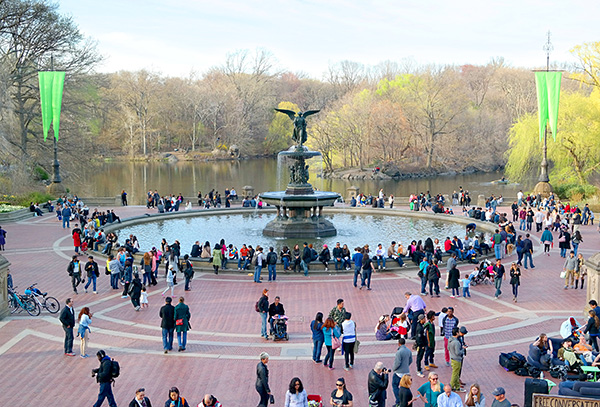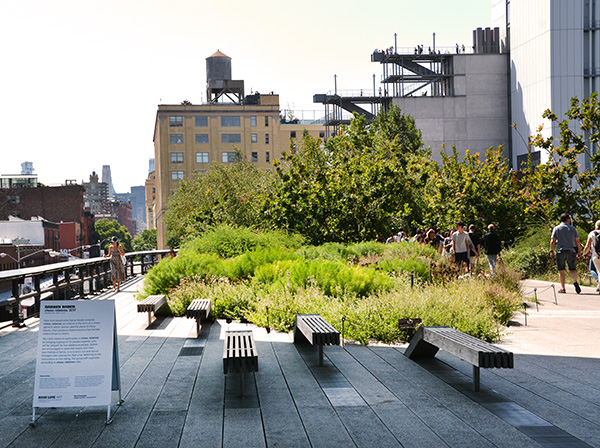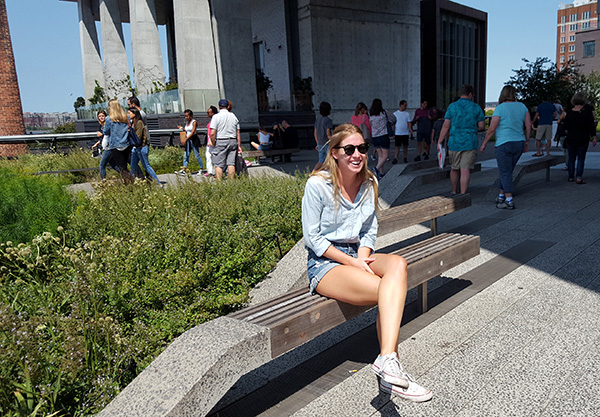 Studies show more ways that parks contribute to local economies and tax revenues
Studies show more ways that parks contribute to local economies and tax revenues
Many people think of parks as an expense - the costs associated with clearing the land, planting trees, installing park benches, mowing the grass, emptying trash receptacles, etc.
What if we reversed that mindset and thought of parks as economic engines instead?
To generate more revenue and taxes, build more parks. Big. Small. Doesn't matter. Just build more. Add more amenities such as artwork, sculptures, picnic tables, trees, grills, playgrounds, band stands, park benches, or even musical instruments. Because parks attract people. And revenue.
Here are 10 reasons why parks should be considered in terms of economic development and as a way to boost an economy.
Why parks have an economic impact
-
Parks increase the value of homes: According to a study in Portland, homes located within 1,500 feet of a park were priced an average of 5% to 20% more than other homes. That means higher tax valuations. Which means more tax revenue for cities.
-
Parks attract tourists: In 2010, state parks in Pennsylvania attracted 38 million visitors who spent a whopping $859 million. That's a huge amount of money that flows into those parks plus also restaurants, gas stations, hotels and retail stores.
-
Events generate visitors and spending: In 2007, San Diego officials estimated that park-derived spending by visitors to their parks, festivals, concerts and athletic events was about $114 million. That added $8.6 million in taxes to city coffers.
-
Parks spur economic development: Experts say the super-popular High Line park built on old elevated train tracks in NYC has been the catalyst for $2 billion in construction nearby. The planners of the Underline linear park system to be built under train tracks in Miami, say the park has already stimulated $200 million in new development. And that park hasn't even been built yet. In Denver, city officials say $1.2 million in federal park grants created $2.5 billion in local public and private investments. People want to live near green spaces. Developers know this.
-
Parks create businesses: Create a popular park, such as the High Line in NYC, and businesses will sprout up around it. Retail stores. Restaurants. Concession stands. Bike rentals. Canoe rentals.
 High Line park in New York City on abandoned elevated rail tracks attracts millions of visitors and has boosted development in the surrounding area. Click on the image to see their fact sheet
High Line park in New York City on abandoned elevated rail tracks attracts millions of visitors and has boosted development in the surrounding area. Click on the image to see their fact sheet -
Parks create jobs: Again in the 2010 study, Pennsylvania state parks said all that activity, including $201 million spent by out-of-state visitors, supported 9,435 full-time and part-time jobs. Those people, in turn, will spend that money at grocery stores, hair salons, gas stations, etc.
-
Parks attract home buyers and renters: Nashville officials said their investment in downtown parks led to a 50% jump in Millennials and other young people moving to the city. These people buy, rent and spend. Educated adults moving to "livable and walkable" urban neighborhoods across the US has increased by 37% since 2000.
-
Parks attract companies: We are in a "Knowledge" economy today. That means workers don't need to be in huge industrial parks. They can be in office buildings. But today's workers don't just want cubicles and skyscrapers. They want an environment where there are parks, green spaces and outdoor recreational activities such as hiking, jogging and riding bikes. To compete for these knowledge workers, businesses want locations with lots of amenities. A study in 1998 found that the quality of life in a town increases its attractiveness to corporations by 33%.
-
Parks even save money on flood control: Philadelphia estimates their parks help them avoid a whopping $5 million in costs for stormwater and flood control they would otherwise have to spend on new pipes, tunnels and drainage systems. Some experts say those savings could be in the billions. It's certainly better to steer water toward a pond in a park then to dig up city streets and add more pipes, pumps and drains.
-
Parks help their citizens save money: City parks are free. State parks are cheap. That means a family can spend a day in the park and literally spend nothing (as opposed to say, visiting Disney World, which costs an estimated $200 per person per day when you consider entrance fees and food). Families can play games, have a picnic, hike the trails, jog, canoe, etc. Because of this, some economists have estimated that parks in Boston are worth $345,352,000 when you consider the amount of money saved by residents.
You can apply these economic benefits any number of ways at any number of locations around the country.
Think about the economic activity created every year in towns like Moab that are one mile away from the popular Arches National Park and just down the road from Canyonlands National Park.
Or imagine the activity generated by a park that is just 1.45 miles long - the High Line in NYC that attracts about 5 million visitors every year with its unique landscaping, artwork and events.
Think about all the economic activity at the Chain of Lakes in Minnesota which draws more than 5 million visitors every year. Those people bike, walk, roller blade, skate and ski around the five city lakes year around.
Not only do people spend money while they are at a park, they spend money getting there too. Or, they plunk down a good amount of their money to buy a second vacation home nearby.
Add some interesting artwork to a park. Install new playground equipment. Create some smaller pocket parks with a few shade trees and park benches. Buy some wooden benches and have local artists paint interesting scenes on them. Provide some outdoor water fountains where kids can play in the summer. Hold some new, unique types of events in a park. Events that will attract out-of-towners.
Invest in protected bike lanes and outdoor bike racks as well. Make it easier for people to pedal around a town and they will spend more time pedaling around your town.
All these park activities attract people and when you draw people out of their homes, they spend money. That money is flipped around several times in the local economy, generating a percentage of taxes each time.
Ironically, in many cities, parks are one of the first things city officials look to cut when a belt-tightening is required.
Perhaps, they need to sit down with some economists, get their calculators out, and realize how investing in parks will help them fill the city's bank account instead.
Sources:
https://conservationtools.org/guides/98-economic-benefits-of-parks
https://www.cityparksalliance.org/why-urban-parks-matter/economic-value
https://www.inman.com/2015/04/16/6-factors-that-impact-the-value-of-a-home/
Note: The Park and Facilities Catalog has been a national supplier of park equipment to cities and states around the US since 2001.
 One of the park benches scattered throughout the High Line with the "peel up" design
One of the park benches scattered throughout the High Line with the "peel up" design


